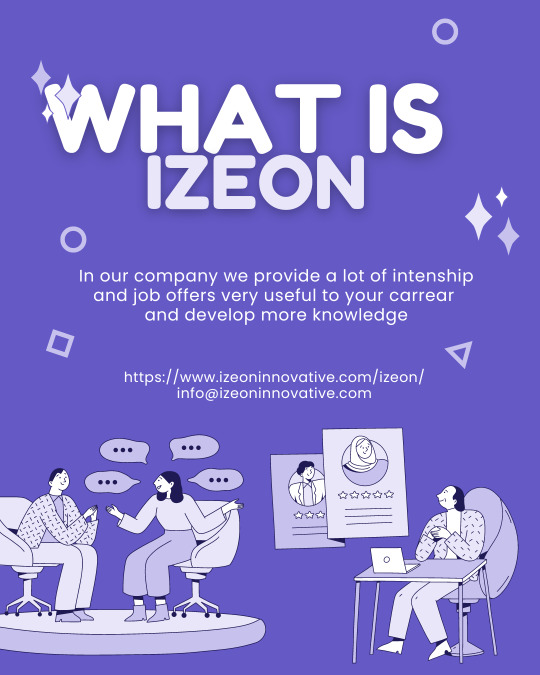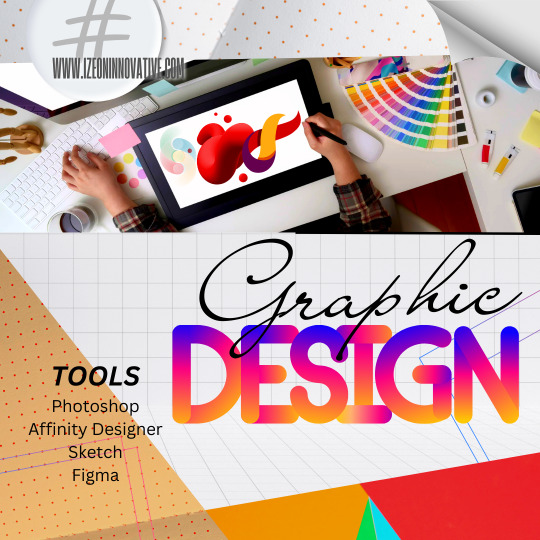Don't wanna be here? Send us removal request.
Text
WEB DEVELOPMENT
WEB DEVELOPMENT
OVERVIEW:
Web development involves:
1. Front-end Development: Creating the visual and interactive aspects of a website using HTML, CSS, and JavaScript.
2. Back-end Development: Managing server-side logic, databases, and application integration with technologies like Node.js, Python, Ruby, or PHP.
3. Frameworks and Libraries: Utilizing tools like React, Angular, Vue.js for front-end, and Django, Express, or Laravel for back-end to streamline development.
4. Responsive Design: Ensuring websites work well on various devices and screen sizes using techniques like media queries and flexible layouts.
5. Version Control and Deployment: Using systems like Git for version control and platforms like AWS, Heroku, or Netlify for deploying and maintaining applications.
OBJECTIVES:
Objectives for a web development course:
1. Understand Core Technologies: Gain proficiency in HTML, CSS, and JavaScript for building and styling web pages.
2. Develop Front-end Skills: Learn to create dynamic, responsive user interfaces using frameworks like React, Angular, or Vue.js.
3. Master Back-end Development: Acquire skills in server-side programming, databases, and APIs with languages like Node.js, Python, or Ruby.
4. Implement Version Control: Use Git for managing code versions and collaborating with other developers.
5. Deploy and Maintain Applications: Learn deployment techniques and best practices for hosting, scaling, and maintaining web applications on platforms like AWS, Heroku, or Netlify.
BENEFITS:
Benefits of taking a web development course:
1. Career Opportunities: Opens doors to a wide range of job opportunities in the tech industry as a front-end, back-end, or full-stack developer.
2. High Demand Skills: Equips you with in-demand skills that are highly valued by employers in various industries.
3. Freelancing Potential: Provides the knowledge needed to take on freelance projects, offering flexibility and the potential for additional income.
4. Creative Expression: Allows you to create and design interactive and visually appealing websites and applications.
5. Continuous Learning: Encourages ongoing learning and adaptation to new technologies and trends in the rapidly evolving field of web development.
OUTCOME:
Outcomes of a web development course:
1. Proficient Web Developer: Gain the skills to build and maintain functional, responsive, and aesthetically pleasing websites.
2. Portfolio of Projects: Develop a portfolio showcasing a variety of web projects demonstrating your capabilities to potential employers or clients.
3. Technical Expertise: Achieve a solid understanding of both front-end and back-end development, including popular frameworks and tools.
4. Problem-Solving Skills: Enhance your ability to troubleshoot, debug, and optimize web applications.
5. Industry Readiness: Prepare for roles in the tech industry with knowledge of best practices, version control, and deployment processes.
VISIT: www.izeonittraininng.com
0 notes
Text
GRAPHIC DESIGN
GRAPHIC DESIGN
OVERVIEW
1. Fundamentals and Principles: Graphic design is grounded in the principles of design such as balance, contrast, hierarchy, alignment, repetition, and space. Understanding these principles helps designers create visually appealing and effective designs. The fundamentals also include knowledge of colour theory, typography, and composition.
2. Tools and Software: Graphic designers use a variety of software tools to create their work. The most popular tools include Adobe Creative Suite (Photoshop, Illustrator, InDesign), CorelDRAW, Sketch, and more recently, web-based tools like Canva and Figma. Each tool serves different purposes, such as image editing, vector graphics, layout design, and prototyping.
3. Types of Graphic Design: There are several specializations within graphic design, including:
- Visual Identity: Designing logos, brand guidelines, and corporate identity.
- Marketing & Advertising: Creating promotional materials like brochures, flyers, social media graphics, and advertisements.
- User Interface (UI) Design: Focusing on the layout and interactive elements of websites and apps.
- Publication Design: Designing layouts for books, magazines, and other print media.
- Environmental Design: Creating signage, murals, and other visual elements for physical spaces.
4. Creative Process: The graphic design process typically follows several stages:
- Research and Discovery: Understanding the client's needs, target audience, and market trends.
- Concept Development: Brainstorming and sketching initial ideas and concepts.
- Design and Iteration: Creating and refining digital drafts, incorporating feedback from clients and stakeholders.
- Finalization and Delivery: Preparing the final design files for print or digital use, ensuring all specifications are met.
5. Industry Applications: Graphic design is used in a wide range of industries including advertising, publishing, web design, packaging, and branding. It plays a crucial role in marketing, communication, and user experience, helping businesses and organizations convey their messages effectively and create a strong visual identity.
OBJECTIVES
The objectives of graphic design are to effectively communicate messages and ideas visually, create aesthetically pleasing and cohesive designs that capture and maintain the audience's attention, and enhance user experience and brand identity across various media platforms.
BENEFITS
A graphic design course provides foundational knowledge and skills in design principles, software, and techniques. It enhances creativity and problem-solving abilities, enabling the creation of effective visual communications. The course offers practical experience through projects and assignments, building a professional portfolio. It opens up diverse career opportunities in various industries such as advertising, marketing, and web design. Additionally, it provides networking opportunities with peers and industry professionals, fostering growth and collaboration.
COURSE DURATION
The duration of a graphic design course can vary widely based on the program and institution. Certificate courses can take a few weeks to a few months to complete, offering a quick introduction to the field. Diploma programs typically last six months to a year, providing more in-depth training. Associate degree programs usually span two years, while bachelor's degree programs take about four years, covering comprehensive design education and general studies. Some advanced courses and specializations, such as master's degrees, can take an additional one to two years.
visit: www.izeonittraining.com
0 notes
Text
PYTHON FULL STACK DEVELOPMENT
Introduction
Python full stack development involves building both the front-end and back-end of web applications using Python. The front-end typically uses frameworks like React, Angular, or Vue.js for creating interactive user interfaces. The back-end relies on Python frameworks such as Django or Flask to handle server-side logic, database interactions, and API integrations. Full stack developers work with databases like PostgreSQL, MySQL, or MongoDB for data storage and retrieval. They ensure seamless communication between the front-end and back-end, creating cohesive and efficient web applications.
OBJECTIVES
1. Develop Scalable Web Applications: Create robust and scalable web applications that can handle growing user demands.
2. Integrate Front-end and Back-end: Ensure seamless integration between the user interface (UI) and server-side logic.
3. Database Management: Implement efficient data storage, retrieval, and management using relational or NoSQL databases.
4. API Development and Integration: Build and integrate APIs for communication between different parts of the application or with external services.
5. Optimize Performance: Enhance application performance, security, and user experience through best coding practices and tools.
BENEFITS
1. Versatility: Python's simplicity and readability make it an excellent choice for both front-end and back-end development, streamlining the development process.
2. Comprehensive Libraries and Frameworks: Extensive libraries and frameworks like Django and Flask expedite development by providing pre-built modules for common tasks.
3. Efficient Prototyping: Python's rapid development capabilities enable quick prototyping and iteration, reducing time-to-market for new features and products.
4. Strong Community Support: A large, active community offers abundant resources, tutorials, and third-party tools, facilitating problem-solving and learning.
5. Seamless Integration: Python's compatibility with various technologies and platforms ensures smooth integration with existing systems and external services.
OUTCOMES
The outcome of Python full stack development is the creation of fully functional web applications that are robust, scalable, and maintainable. These applications feature seamless front-end and back-end integration, providing a cohesive user experience. Additionally, they benefit from Python's efficiency, extensive libraries, and strong community support.
COURSE DURATION
The duration of a Python full stack development course typically ranges from 3 to 6 months, depending on the course intensity and schedule. Intensive bootcamps may offer condensed programs lasting 8 to 12 weeks, while part-time courses might extend over 6 months. The course duration also varies based on the depth of topics covered and hands-on project requirements.
VISIT
www.izeonittraining.com
0 notes
Text
0 notes
Text
TITLE - UI & UX ABOUT UI (User Interface) focuses on the visual aspects of a product, ensuring it is aesthetically pleasing and intuitively designed. UX (User Experience) involves understanding and enhancing the overall experience users have with a product, emphasizing usability, accessibility, and satisfaction. UI designers work on the look and feel, including layouts, colors, and typography. UX designers research user behavior, create personas, and design workflows to optimize the user journey. Together, UI and UX ensure that a product is both visually appealing and user-friendly, creating a seamless and enjoyable interaction. The outcomes of effective UI and UX design include:
Enhanced User Satisfaction: Users find the product easy to navigate and enjoyable to use.
Increased Engagement: Visually appealing and intuitive designs encourage more interaction and retention.
Improved Accessibility: The product becomes usable for a wider range of people, including those with disabilities.
Higher Conversion Rates: Optimized user journeys lead to more successful completions of desired actions, such as purchases or sign-ups.
Stronger Brand Loyalty: Positive experiences build trust and affinity with the brand, encouraging repeat use and recommendations. Here are some commonly used tools for UI and UX design:
Figma: A cloud-based design tool for creating, prototyping, and collaborating on user interfaces.
Sketch: A vector graphics editor for designing interfaces and prototypes, popular among macOS users.
Adobe XD: A design and prototyping tool that integrates well with other Adobe Creative Cloud applications.
In Vision: A digital product design platform used for prototyping, collaboration, and workflow management.
Axure RP: A wireframing and prototyping tool that supports detailed documentation and interaction design. The benefits of effective UI and UX design include: ❖ Improved User Satisfaction: Users enjoy a seamless and intuitive experience, leading to higher satisfaction and positive feedback. ❖ Increased User Engagement: Attractive and easy-to-use interfaces encourage users to spend more time interacting with the product. ❖ Enhanced Accessibility: Thoughtful design ensures that the product is usable by people with diverse abilities, expanding the user base. ❖ Higher Conversion Rates: Optimized user journeys and clear calls-to-action result in more successful user actions, such as purchases or sign-ups. ❖ Reduced Support Costs: Intuitive design reduces user errors and the need for extensive customer support, lowering operational costs. QUESTIONS
why you choose ui & ux domain?
Why Ui & Ux is useful for career growth?
UI & UX is now market trend?
0 notes








